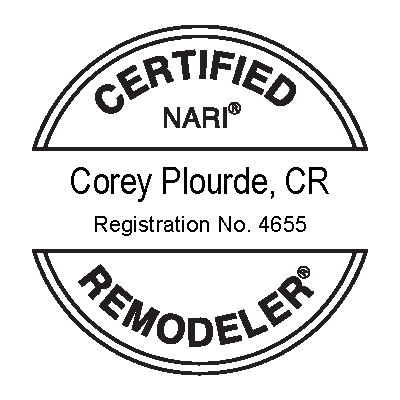How to Install Crown Molding
/If you want to update and modernize the look of a drab, out of style room in your house, there is a very simple transformation; crown molding. The simplicity of adding a few inches of wood to the tops of your room seems downright silly not to attempt, and this walk through will help you get your feet wet in installing crown molding to your room.
1. Cut your Corners
Once you have picked out the molding that will fit your needs and budget, and properly measured the walls, it is time to make your cuts. Using a miter saw, place your piece of molding upside down and backwards against the frame of your miter box. Once you have measured out the length of your cut, you are going to make your first cut at a 45 degree angle. For an inside cut, the bottom piece of trim is going to be longer than the top, and vice versa on the outside corners; however, keep in mind you are working upside down when cutting.
2. Line Up Angles
Once you have completed your two corner angles, it is time to figure out the correct positioning on the wall. For the inside corner, line up the two end pieces of molding so that they are fitting neatly in the corner. Tilt the molding so that the top piece is flush to the ceiling, while the bottom piece is sitting tightly on the wall. This is going to take some time to get used to placing these pieces together, but once you do, get ready for step three.
3. Fasten Molding
Once you have found the proper fit for the corner angles, it is time to fasten the molding to the wall. Working from the center, drive your finishing nails through the molding, roughly ½ inch from the bottom edge, and another ½ inch from the top edge. Make sure that before you start filling your molding and walls with holes that you mark off where the studs are so that they are secured firmly to the wall.
4. Apply Caulking to Cracks
You are going to find that the angles might not fit as perfect as you would like, but have no fear this is not a disaster. If you are noticing any gaps in your corner angles, or where the molding meets the wall or ceiling, apply caulking adhesive to fill the necessary holes. Once the caulk is dry, gently sand away the excess adhesive for a smooth finish.
5. Paint
If you are planning on painting your molding, which I highly recommend, completing step 5 will leave you with a great sense of pride and accomplishment. Determine what finishing coat you wish to have on your molding, and apply your first coat. Depending on the molding you purchased, you might be lucky and only need to apply one coat of paint on your trim, but to be on the safe side, plan on adding a second once it is completely dry.
Need any additional help? Like the idea, but don’t want to do it yourself? Contact us today for a free estimate.





























